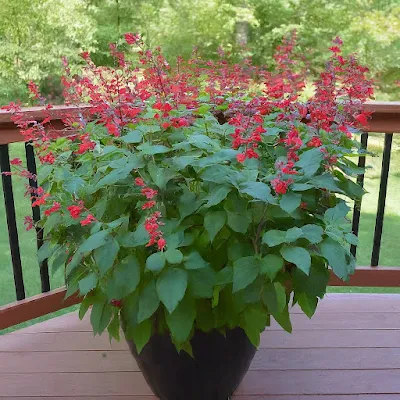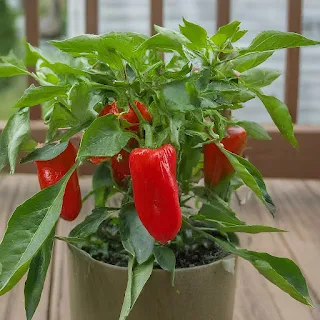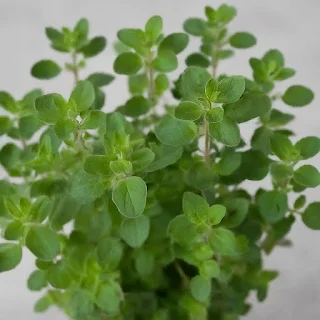Top 10 Most Underrated and Overlooked Herbs
 |
| Pineapple sage in bloom |
Every season I take an inventory of the herb plants I want to try cultivating. This usually involves a walk around the garden to see which plants managed to overwintered well, and also an inventory of indoor refugees from last year that managed to survive the change of venue over the winter months.
Again and again, some herbs seem worth the effort that don't get nearly enough praise or press . . . in my opinion, anyway. These 10 herbs are personal favorites. You might want to give them a try if you haven't already.
Underrated and Underappreciated Herbs
10.Pineapple Sage (Salvia elegans) - Perennial in Zones 9 and 10
This tall sage has light green leaves and red, trumpet shaped flowers that bees and butterflies love. It does smell like pineapple and makes a great ingredient in fruit salads and teas.
9.Curry Plant (Helichrysum italicum) - Perennial in Zones 8 through 11 (Marginal to zone 6 in sheltered locations.)
 |
| Curry plant in bloom |
This little grey plant with yellow flowers smells like a curry blend. It doesn't need much water, so it's a good choice for xeriscaping. Deers hate it, too. In cooking, sprigs can be added to roasting meats for a mild flavor that's hard to describe. Its a cross between curry and something flowery or sweet - maple maybe. (Remove the sprigs before serving). It works well with chicken and can also compliment egg dishes when used in small quantities. Less is more with curry plant. It can taste bitter. FYI: This isn't an ingredient in traditional Indian curry.
 |
| Potted fruiting paprika |
Paprika is most often used in the U.S. as a seasoning for cold dishes, like potato salad and deviled eggs. Its flavor really shines in hot dishes, though. Paprika is available in a number of varieties, from hot to sweet. Try a few in your garden and you'll be a paprika convert.
 |
| Healthy Stevia plant |
This little sweetener-that-could is tricky to start from seed, but easy to grow after that. Dried and powdered, it's an inexpensive low-cal sugar substitute that's always a conversation starter. The Japanese have been using it for decades. Be careful growing it indoors. It's toxic to pets.
 |
| The delicate leaves of sweet marjoram |
This first cousin to oregano is milder and a little more delicate in the garden. It's a great all-purpose seasoning, though, that works with robust sauces and soups as well as meat, foul and fish.
 |
| Healthy chives grow in tight bunches |
My chive patch comes back year after year, regardless of how brutally cold the winter months get. When green onions are too expensive (or a bacteria risk) I substitute chives. They work great in potatoes, as an egg garnish, and as a garden fresh accent on pizza.
 |
| Catnip is a member of the mint family |
Even if you don't have cats, you might want to give catnip a try this year. Catnip oil is kryptonite to termites, and if you have an ailing tree or decaying stump, a catnip plant nearby may prove to be good insurance policy.
 |
| Lemon eucalyptus has a strong fragrance |
Like lemon balm on steroids, lemon eucalyptus is very fragrant, and the dried leaves make an attractive and luscious addition to potpourri. The oil is a natural pest repellent and a luxurious base for your homemade cleaning products.
2.
|
1. Saffron (Crocus sativus) - Perennial in Zones 6 to 9
The stigma of this late season crocus is the king of spices, and you might be able to grow it in your own backyard. Saffron crocus flowers in late summer or early fall instead of early spring. A patch of 20 to 30 bulbs could net you enough saffron for a season.
--------------------
 |
| Saffron Crocus |
The stigma of this late season crocus is the king of spices, and you might be able to grow it in your own backyard. Saffron crocus flowers in late summer or early fall instead of early spring. A patch of 20 to 30 bulbs could net you enough saffron for a season.
--------------------
Corsican mint photo - By David Eickhoff from Pearl
City, Hawaii, USA (Mentha requienii Uploaded by Tim1357) [CC-BY-2.0
(http://creativecommons.org/licenses/by/2.0)], via Wikimedia Commons
http://commons.wikimedia.org/wiki/File%3AMentha_requienii_(5596580103).jpg
Crocus Photo - By Photographer: User:Velela (File:Safrron stigmas crocus sativa.JPG) [CC-BY-SA-3.0 (http://creativecommons.org/licenses/by-sa/3.0) or GFDL (http://www.gnu.org/copyleft/fdl.html)], via Wikimedi
Crocus Photo - By Photographer: User:Velela (File:Safrron stigmas crocus sativa.JPG) [CC-BY-SA-3.0 (http://creativecommons.org/licenses/by-sa/3.0) or GFDL (http://www.gnu.org/copyleft/fdl.html)], via Wikimedi


Love the curry plant and couldn't live without chives!
ReplyDeleteI never considered Paprika to be an herb, but rather a spice. ;) We are growing paprika peppers this year, as my husband comes from Eastern Europe and finds the stuff in jars here insipid and tasteless.
ReplyDeleteI have Corsican mint in the garden. It's so cute and has not proved invasive so far, unlike other mints. I'll have to give the saffron a try someday!
I always have to include any sage in my container garden..And my faves are the common sage (salvia officianalis) and definitely pineapple sage. Chives also make their presence known in my yard too. Perfect for roasts =) I love just running outside and gathering a few stalks to chop and put in my dishes! And catnip has so many benefits for humans (not just kitties) that it's also made a home in my garden. Any tips for the saffron crocus? I would love to include it as well.
ReplyDeleteHi Earth Mother,
ReplyDeleteSaffron crocus needs lots of sun and really good drainage. Cut back on water in early autumn.
How do you grind paprika? Do you dry the peppers and then grind, or do you use the peppers fresh?
ReplyDeleteHi Christine,
ReplyDeleteGreat question. You dry the peppers first. It only takes about 12 hours in a dehydrator. Once dry, they're rigid and easy to reduce to powder. You can also smoke the peppers before grinding or roast and then dry them.